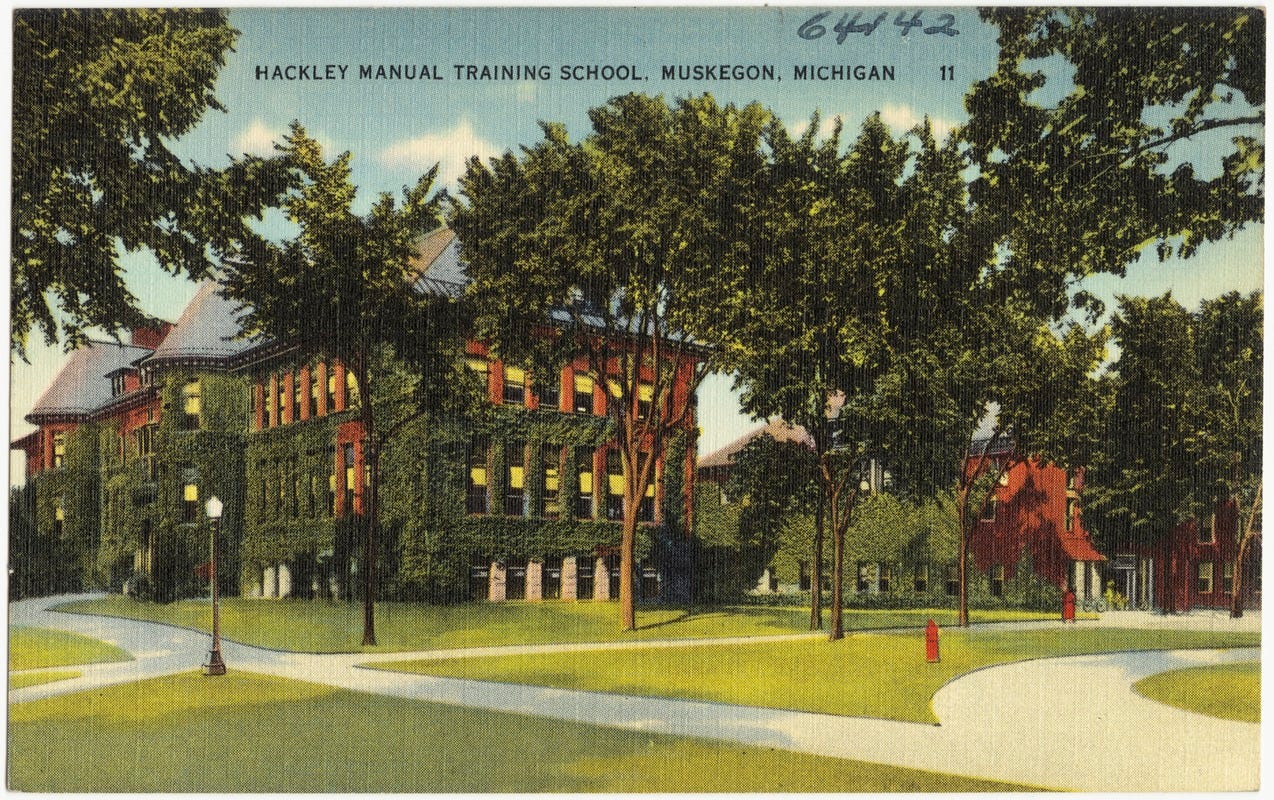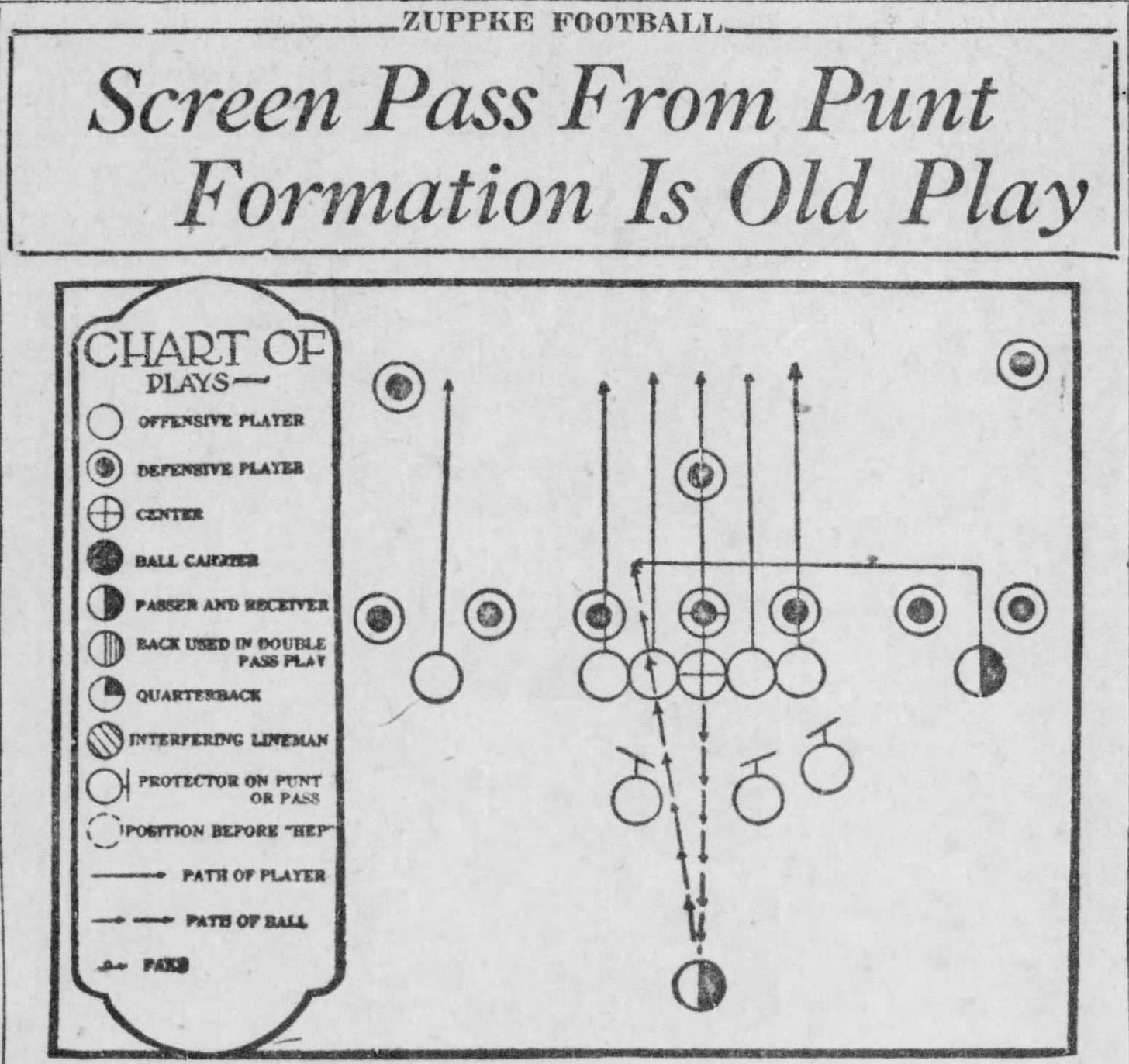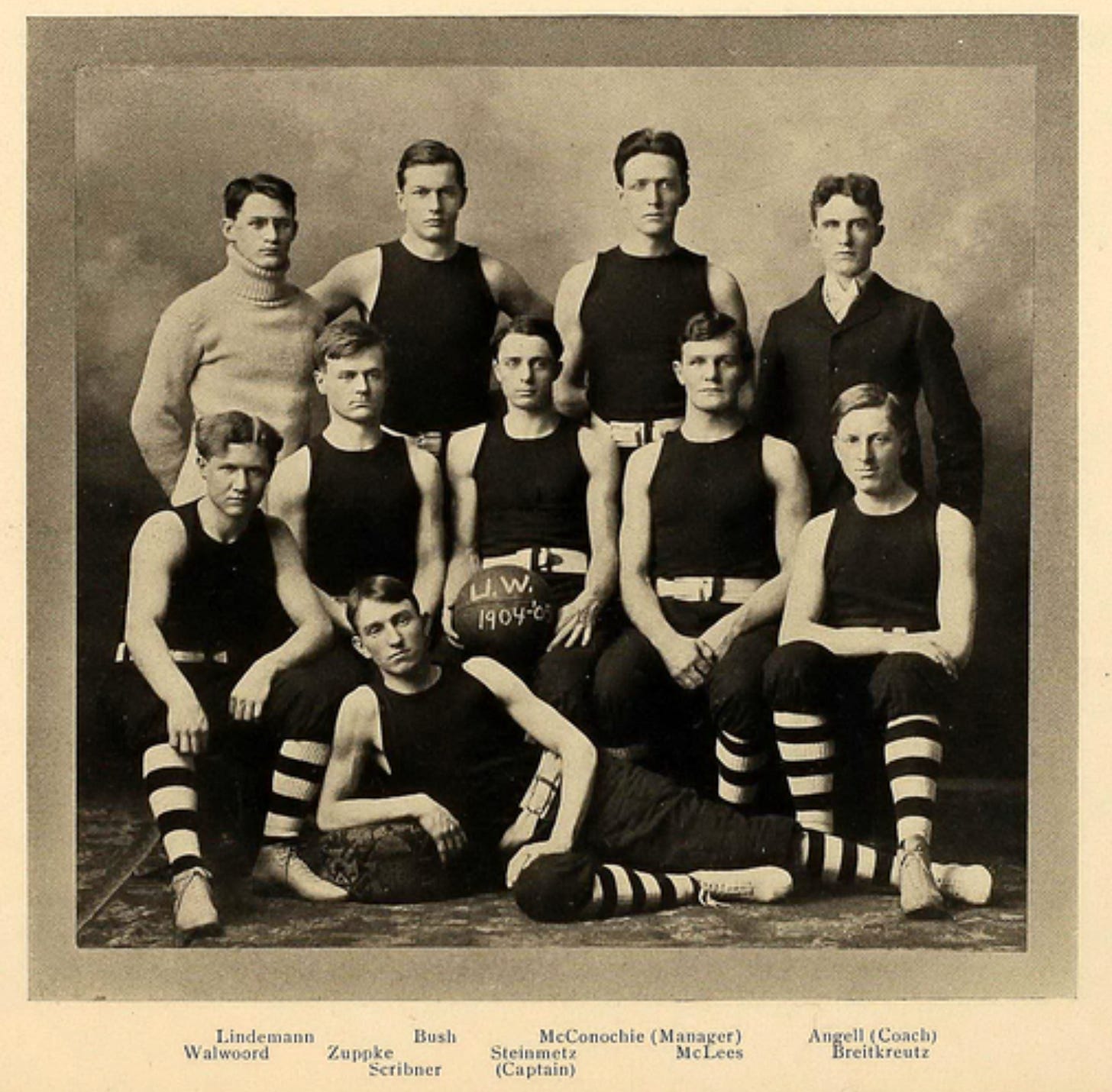Today's Tidbit... Bob Zuppke's Old Screen Pass
You know a football play is old when Bob Zuppke described it as old back in 1923, and that is the case with the screen pass. Zuppke knew the screen pass was old because he invented the play when forward passing dawned in 1906. Zuppke, then coaching the Hackley Manual Training School in Muskegon, Michigan, built a prep power that took on and beat teams statewide.
We consider the screen pass a standard play today, but it originated under a different set of rules and required modification as the rules evolved. Regular readers may recall an April article, Before There Was Pass Interference, describing how football did not penalize offensive or defensive pass interference in 1906 and 1907 because the rule-makers did not foresee the need. That story told how some early passing plays involved sending some or all the ineligible linemen a few yards downfield, where they surrounded an eligible teammate, protecting him as he caught the ball.
Zuppke's conceived his screen pass similarly. He released his ineligible linemen to head straight downfield and block whoever came their way while a back or end slipped behind them to take the pass and follow the blockers. Since his design kept the blockers and receiver moving rather than being stationary, it was more successful and adaptable when downfield blocking rules changed.
A Zuppke article and play design from 1923 shows his thinking then, but the same scheme could have worked in 1906. Teams often passed from the short punt formation, which had the advantage of having the ends split a few yards from the tackles, spreading the defense, and making it easier to release downfield. (Given all the attention devoted to the Tush Push nowadays, it's worth mentioning that the original quarterback sneak originated from the short punt formation by 1917.) Ineligible receivers could legally go downfield on pass plays in 1923, so the only change from 1906 to 1923 would be that the blockers of 1923 could not engage the defense while the forward pass was in the air.
The screen continued evolving when the T and spread formations arrived. Today's tight end screen resembles Zuppke's end screen, while bubble screens in spread or trips formations use the screen concept but are substantially different from Zuppke’s design.
The screen is one of several pass-play designs pioneered by Zuppke. He devised the flea flicker around 1910, though his flea flicker is what we now call the hook and lateral, while flea flicker came to describe a different play. Too small to play varsity football at Wisconsin, Zuppke was a basketball guard, so his experience on the hardcourt may have influenced how he conceived pass plays in football. Zuppke may have originated "basketball on grass" before Joe Tiller and Drew Brees made the term famous at Purdue.
Football Archaeology is reader-supported. Click here to buy one of my books or otherwise support the site.





All that can said, is Wow! Screens are such a staple that I almost forgot that it had an origin. Thyfor sharing that story with us.